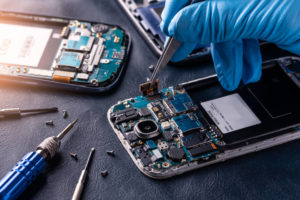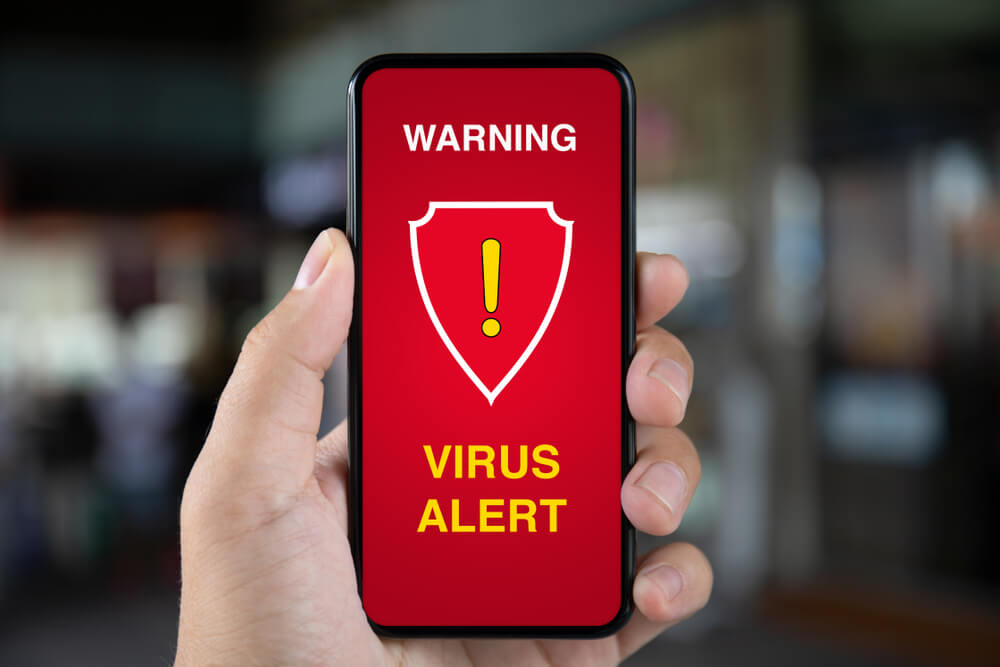Phone Virus Types, Signs, and Methods
Although viruses were first well-known for their impact on computers and laptops in the 1980s, they have now found an additional target: smartphones. Your phone can be affected by viruses. They target its weak points in the same way as a computer. However, you can prevent this from happening by taking the necessary precautions.
PC Laptops is happy to provide both Android and iPhone repair services for a wide range of issues including software and viruses. How can you tell if your phone has a virus? What are the different types of mobile phone viruses? These are the most important areas. We also provide basic steps to remove viruses from both Android and iPhone models.
Signs of a Phone Virus
You won’t be able to tell if your phone is being affected by viruses in many cases. Most viruses that are transmitted to your phone by malware will not be detected until a while, so you can continue using the phone as normal.
You may notice some performance or usage issues over time. All of these issues can be described as follows:
Fraudulent charges: Trojans and other viruses may make in-app purchases, charge text fees to premium accounts, and then attempt to collect them via hacking.
Crashing apps on phones: Although there are a few possible reasons why apps might crash, the repeated problems here, plus a lackluster explanation such as limited storage, could be due to viruses.
Excessive data. Viruses can also run programs and functions in the background. This could lead to an increase in data usage and cost.
Battery problems: Background behavior, and other issues can lead to your battery running at a faster rate than normal. If there is no legitimate reason why your battery is acting so badly, this can be a very noticeable sign.
Pop-ups are normal. However, are they showing up even when you close your browser? Adware is a malware type that attempts to mine your data.
Overheating: Does your phone heat up frequently without any explanation? Malware that uses up CPU and RAM quickly could cause this.
Spam text: Have your friends or colleagues told you that they are receiving unsolicited texts from you? It could be a common virus that attempts to infect people by sending them SMS messages.
Types of phone viruses
Hackers are constantly creating new viruses and improving the attack methods on devices. Therefore, our defenses must be flexible. These are the most popular phone virus types:
Adware: This is a type of malware that pops up as a pop-up. Although they may seem annoying, these might actually be monitoring your activity and rooting your device to try to steal or compromise data.
Spyware is a virus that disguises itself as a legitimate application. It will install itself on your computer and track activity, location, usernames, passwords, and other information. Spyware is one the most difficult viruses to detect. It can even steal data without the user knowing.
Ransomware: Ransomware is a malware that encrypts personal data and makes it difficult to access. It was first developed on computers. The same idea is sometimes used on smartphones.
Trojan horse: These viruses are typically delivered via text message and infiltrate your device. They can send messages to other people at a premium including increasing your bill.
Worm: The worm is another text-spread virus. It attempts to spread to all devices to allow hackers to install malware and steal large amounts of data.
iPhone Virus Removal
Although iPhones are usually quite secure, viruses can still be spread to them (especially if they have been jailbroken). These are the steps to remove a virus from your iPhone.
Clear all data history: Click Settings and choose your main browser. Next, tap Clear History & Website Data.
Restore the phone to an older backup if the problem persists. Go to settings and Apple ID. Select iCloud. Next, go to Manage Storage and then Backups. You can then choose the most recent backup you have and restore it.
This will make it possible to reset your phone as a last resort. Open Settings and then select General. Locate the reset setting and choose Erase All Contents and Settings. This will restore the factory settings to your phone.
Android Virus Removal
Android devices are more susceptible to malware and viruses than iPhones. If you suspect you may have a virus, here’s how to remove it.
Clear cache: Navigate to apps and notifications and locate your Chrome browser. Clear cache by going to storage and selecting Clear Cache.
To boot in safe mode, press and hold the power button. Next, choose Reboot to Safe Mode from the dialogue box.
Locate the bad app. Open Settings and select Apps. Next, manually check your apps for suspicious downloads. If you locate one, uninstall it immediately.
Enable Play Protect: This is an added-in program that works alongside antivirus software. Open the Play Store app, open the menu at the top left, and then select the option to scan your device for security threats.



